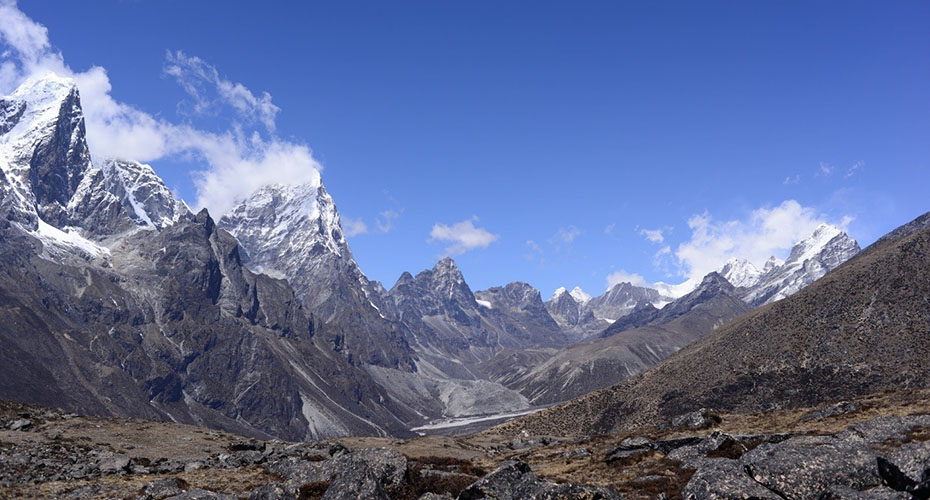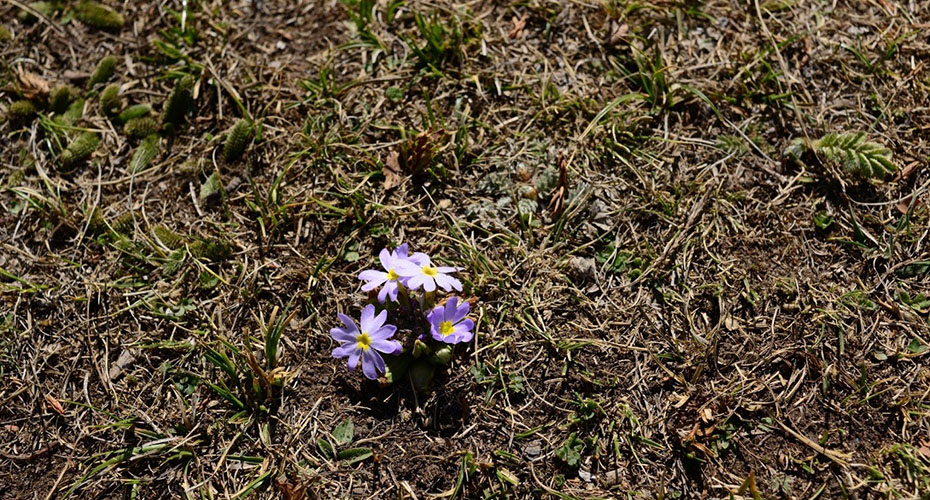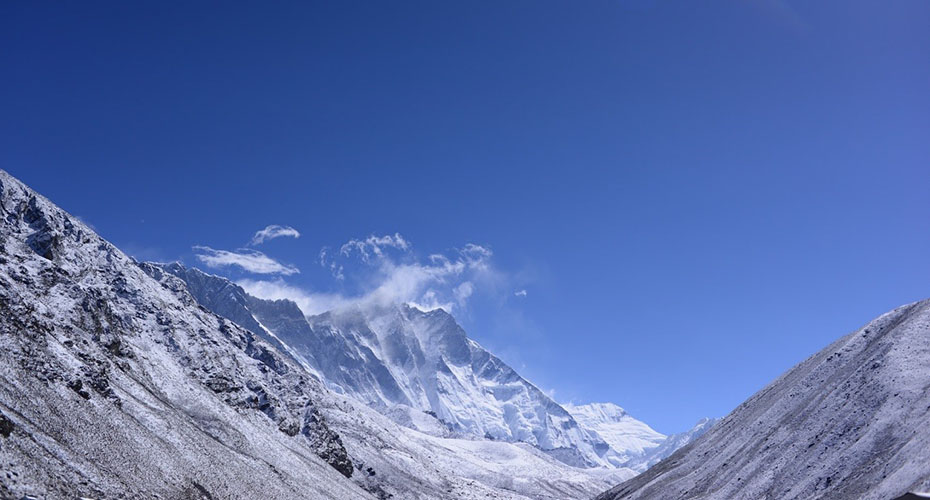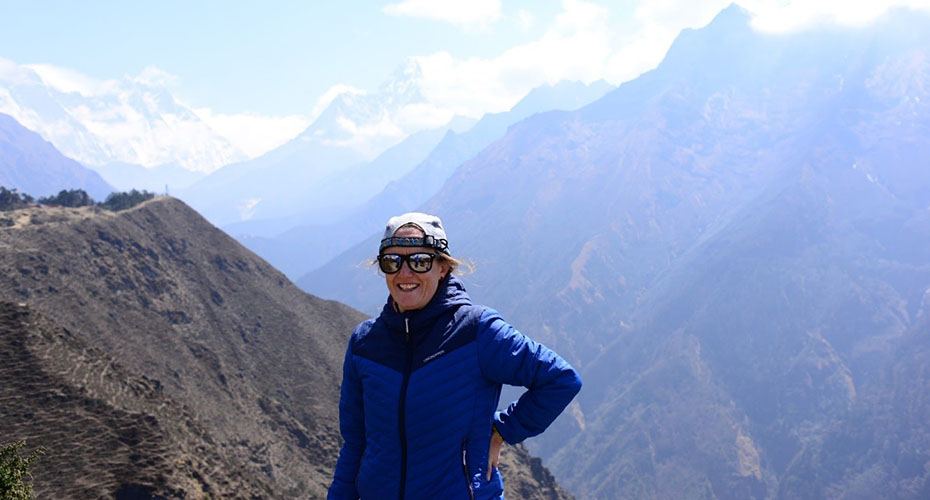Vegetation expansion in the subnival Hindu Kush Himalaya
Research overview:
Whilst you may have read or heard about the dynamic mountains and glaciers of the Himalayan system, considerably less research has explored ecosystem change below the glaciers yet above the treeline. In this remote, hard-to-reach altitudinal belt – which lies between about 4150 and 6000 m above sea level, the plant life is dominated by alpine species which are adapted to the cold climate and exposed conditions. Research from ESI Academic, Dr Karen Anderson has used satellite data to reveal that plant life is expanding across this vast area. Her work published in Global Change Biology showed that in some regions there has been a significant increase in this ‘subnival’ vegetation between 1993 and 2018.
Key objectives:
Using data from 1993 to 2018 from NASA’s Landsat satellites, University of Exeter researchers measured small but significant increases in subnival vegetation cover across four height brackets from 4,150-6,000 metres above sea level.
Impact:
The Hindu Kush Himalayan region extends across all or part of eight countries, from Afghanistan in the west to Myanmar in the east. Himalaya means ‘abode of snow’ and the subnival habitats in focus in this work are seasonally snow-covered. The Himalayan mountain range supplies up to 1.9 billion people with water. Whilst there have been huge scientific efforts to quantify the impact of melting ice on water security, considerably less attention has been turned to evaluating the eco-hydrological consequences of vegetation expansion at high altitude. We know from work in other systems that ecological and hydrological processes are coupled, so it makes sense that changes in vegetation distribution within this high altitude belt could have implications for water security.

It is important to monitor and understand ice loss in major mountain systems, but subnival ecosystems cover a much larger area than permanent snow and ice and we know very little about them and how they moderate water supply.
Dr Karen Anderson
Jones, D. B., Harrison, S., Anderson, K., Shannon, S., & Betts, R. A. (2021). Rock glaciers represent hidden water stores in the Himalaya. Science of The Total Environment, 145368.
Harrison, S., Jones, D., Anderson, K., Shannon, S., & Betts, R. A. (2021). Is ice in the Himalayas more resilient to climate change than we thought?. Geografiska Annaler: Series A, Physical Geography, 103(1), 1-7.
Anderson, K., Fawcett, D., Cugulliere, A., Benford, S., Jones, D., & Leng, R. (2020). Vegetation expansion in the subnival Hindu Kush Himalaya. Global change biology, 26(3), 1608-1625.
Jones, D. B., Harrison, S., & Anderson, K. (2019). Mountain glacier-to-rock glacier transition. Global and Planetary Change, 181, 102999.
Plant life expanding in the Everest region (January 2020)
Rock glaciers will slow Himalayan ice melt (April 2021)
Grass growing around Mount Everest as global heating intensifies (The Guardian, January 2020)
Plant life 'expanding over the Himalayas' (BBC, January 2020)
More plants are growing around Everest -- and the consequences could be serious (CNN, January 2020)
Dr Karen Anderson (University of Exeter)
Dr Darren Jones (University of Exeter)
Dominic Fawcett (University of Exeter)




